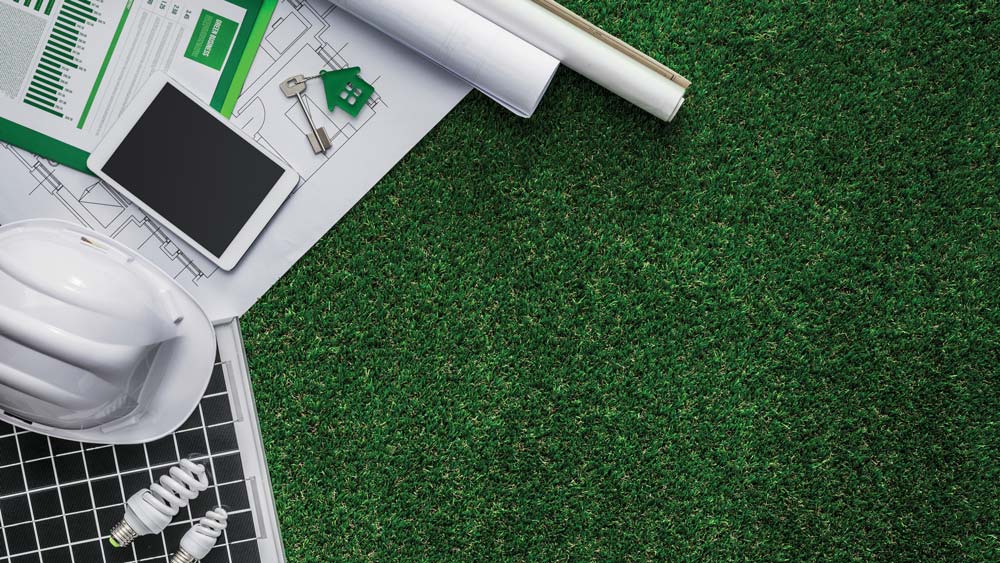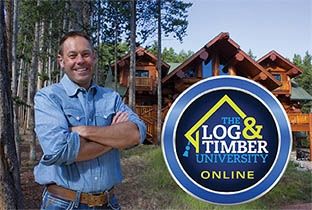
Colonial. Victorian. Farmhouse. Mid-century modern. Log and timber frame — houses come in countless styles and forms. Yet among this creative architectural abundance only one type of dwelling thoughtfully addresses the holistic living environment: the green home. Unfortunately, the perception of what is “green” has grown murky.
“Those five little letters mean something different to everyone,” says Marla Esser Cloos, owner and founder of The Green Home Coach.
To Marla, green has become a marketing catchphrase that helps people feel better about their choices. If the idea of a green building is not up to whim, what is it exactly?
“A green home creates an environment that’s healthier for you and the community,” Marla says. “People have lost the idea of health.”
Whole-body health does not exist in isolation. It’s fused to the environment, built or otherwise, with its ability to support life and growth, traits associated with the color green. The National Association of Homebuilders (NAHB) established the National Green Building Standard (NGBS) Certification system to verify and validate a home’s green practices across six categories. Marla, an NGBS certifier, breaks it down.
Site Design
This is how a building interfaces with the land and the community in which it resides. Think in terms of a home blending into the landscape and working with a property’s natural features and ecosystem.
Resource Efficiency
These are a home’s basic ingredients. Aim for low amounts of chemicals and volatile organic compounds (VOCs). Carbon and air-quality considerations across a product’s life cycle are also important, making locally sourced or recycled materials top choices. Durability and minimizing waste are other key considerations. John Barrows, an author and custom builder with P3 Builder Group, encourages lower concrete foundations, given cement’s massive environmental impact. For Marla, choosing building materials should be like choosing food. “With whole foods you know what you’re getting,” she says. “Keep it simple.”
Water Efficiency
Water usage is a question of quantity. An easy shortcut is to look for the EPA’s WaterSense label, which represents water efficiency and performance. Landscaping counts, too. Native plants reduce demand for water, fertilizers and toxic chemicals while supporting healthy soil biomes and pollinators.
Energy Efficiency
Leaky homes waste energy and money. According to John, a tight thermal envelope leads to a lower carbon footprint over the home’s life cycle. Optimizing energy efficiency also requires siting a home to take advantage of passive-solar heating. Additional strategies include the incorporation of design features like wrap-around porches, overhangs and creating passive air currents with skylights and central stairways.
Indoor Environmental Quality
Cultivate healthy indoor air by keeping excess moisture and toxins out. Formaldehyde and VOCs sneak into homes in many products, and moisture encourages mold, mildew and rot, which cause sickness. In the kitchen, gas stoves are a significant source of indoor-air pollution. Running the exhaust fan is essential.
Operation and Maintenance
Right-sized homes with strategic design are usually smaller in scale, consume less energy and have less maintenance than their sprawling counterparts. Building on a smaller lot is also kinder to the planet. “We have finite resources and at some point, we need to scale accordingly,” Marla says.
Whether you want to go green from the very beginning with a new build or achieve it incrementally with an older home, every effort is worthy. (Plus, certified green homes carry more resale value than their conventional counterparts.) “Just pick a few things in your daily life and swap for something better, Marla advises. “I started with LED light bulbs, eco-friendly cleaning products and tree-free toilet paper.”
Greening your home brings better personal health outcomes, but the benefits resonate beyond your abode, bringing a brighter future for all.











